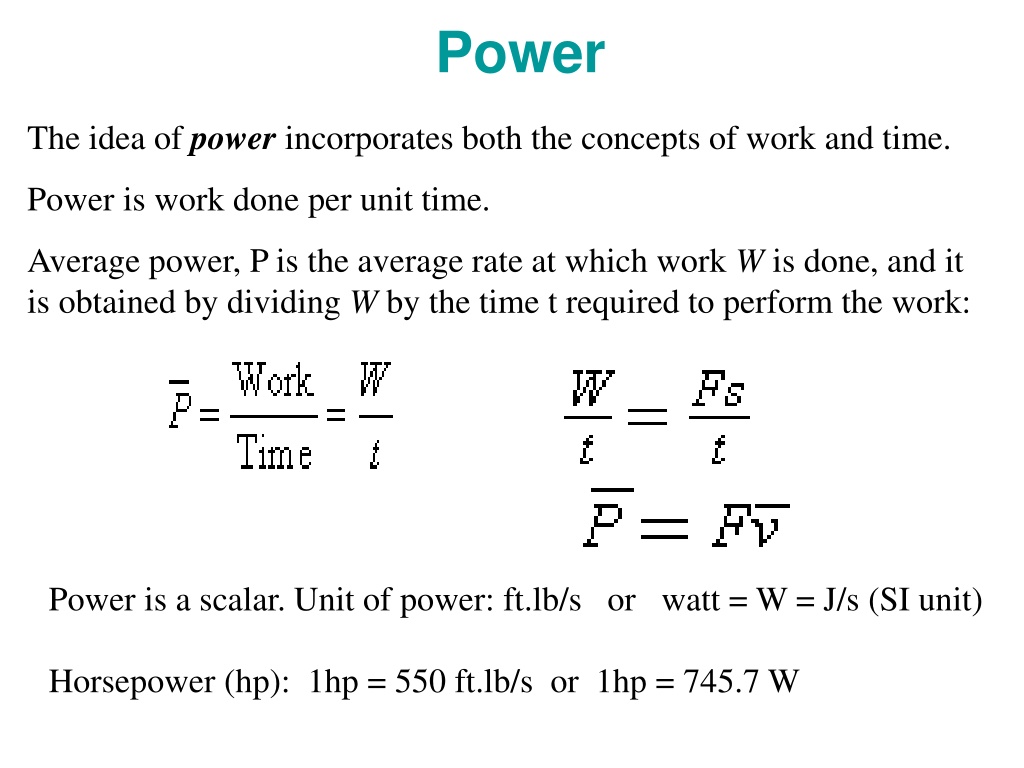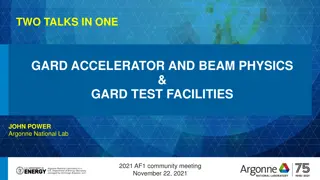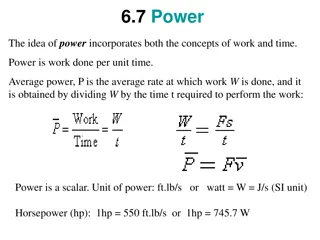Understanding Power, Work, and Energy in Physics
Power is defined as work done per unit time, with the concept incorporating both work and time. This concept involves understanding average power, units of power such as watt and horsepower, as well as estimating costs related to electricity consumption. Additionally, the relationship between force, distance, and work done is explored, including scenarios involving variable forces and elastic potential energy in systems such as compound bows.
Uploaded on Sep 19, 2024 | 0 Views
Download Presentation

Please find below an Image/Link to download the presentation.
The content on the website is provided AS IS for your information and personal use only. It may not be sold, licensed, or shared on other websites without obtaining consent from the author. Download presentation by click this link. If you encounter any issues during the download, it is possible that the publisher has removed the file from their server.
E N D
Presentation Transcript
Power The idea of power incorporates both the concepts of work and time. Power is work done per unit time. Average power, P is the average rate at which work W is done, and it is obtained by dividing W by the time t required to perform the work: Power is a scalar. Unit of power: ft.lb/s or watt = W = J/s (SI unit) Horsepower (hp): 1hp = 550 ft.lb/s or 1hp = 745.7 W
Estimating the cost of Electricity 34. A large household air conditioner may consume 15.0 kW of power. What is the cost of operating this air conditioner 3.00 h per day for 30.0 d if the cost of electricity is $0.110 per kW h ?
Force versus Distance Graph Work = Area under the Force versus Displacement graph
Work Done by a Variable Force The work done by a variable force in moving an object is equal to the area under the graph of F cos versus s.
Hookes law and Elastic Potential Energy
Work and the Compound Bow Find the work that the archer must do in drawing back the string of the compound bow in the Figure from 0 to 0.500 m.























